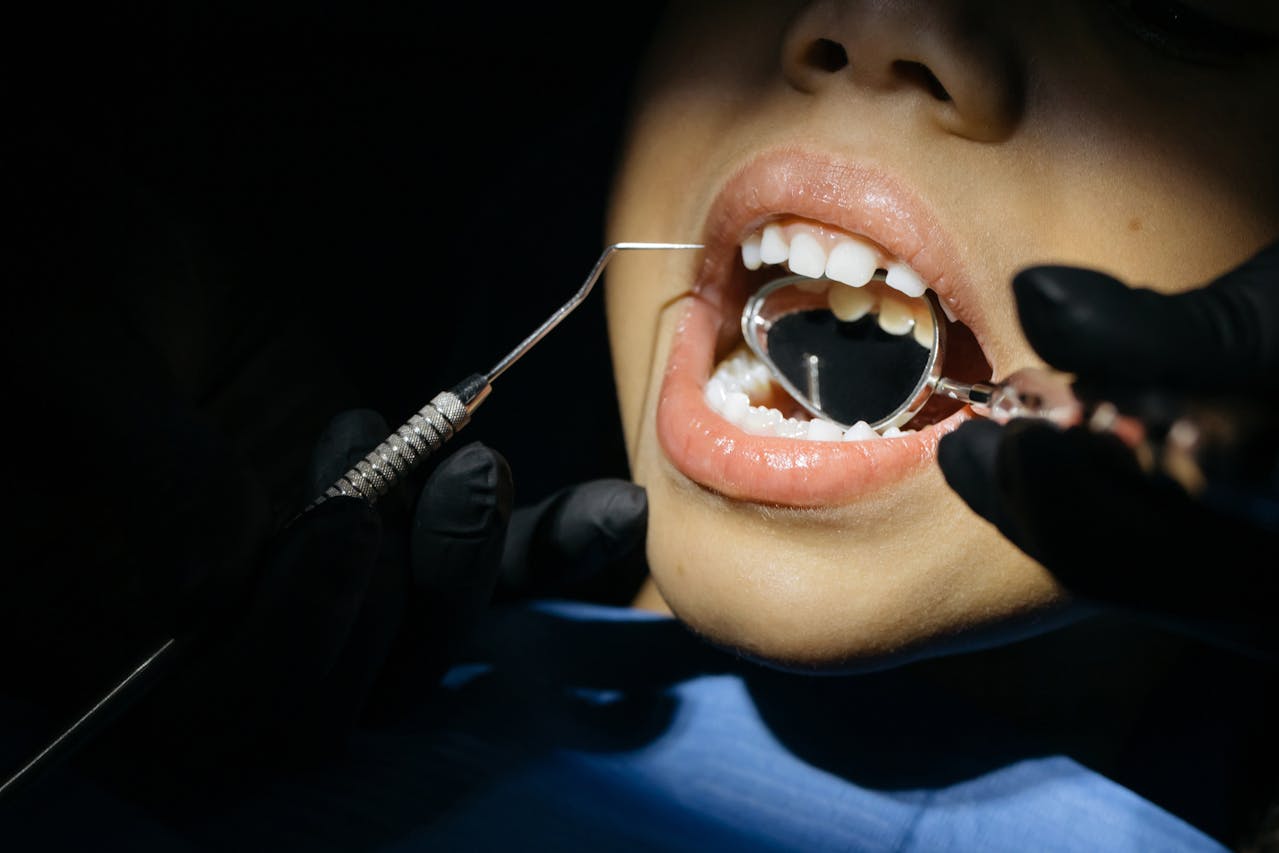What to Look for When Choosing the Right Dentist for Your Child

Choosing a dentist for your child is more than finding someone who can “clean teeth.” You’re selecting a long-term partner in your child’s health—someone who’ll shape their attitude toward dental care for years. If you’re looking for a pediatric dentist in Quantico, VA, here’s a comprehensive guide to help you evaluate your options confidently.
Why Choose a Pediatric Dentist (Not Just a “Kid-Friendly” Dentist)
Pediatric dentists complete 2–3 additional years of training after dental school focused exclusively on infants, children, and teens (including kids with special healthcare needs). That training covers child development, behavior guidance, growth and bite (occlusion), interceptive orthodontics, and minimally invasive care. In short: they’re experts in both clinical care and communication with children—a combination that makes visits smoother and outcomes better.
Quick litmus tests
- Do they clearly state pediatric specialization (and ideally board certification)?
- Do they mention infant exams, habit counseling, and developmental milestones?
- Is the office designed around kids (front desk manner, language, pacing, and visuals)?
Credentials to Verify (No Guesswork)
- Education & Residency: Pediatric dentistry residency after DDS/DMD
- Board Certification (optional but ideal): Indicates advanced testing and ongoing commitment
- Hospital Privileges: Helpful for complex cases or children needing OR care
- Sedation Credentials: If they offer nitrous oxide or deeper sedation, confirm safety protocols and who administers them
- CPR/PALS: Current certifications for the entire clinical team
What to ask
- “Are you a pediatric specialist? Where did you complete your residency?”
- “Do you treat children with special healthcare needs?”
- “What behavior guidance techniques do you use?”
A Child-Centered Environment (More Than Bright Walls)
The right office lowers anxiety the moment you walk in. You’ll see:
- A warm check-in process with kid-level explanations (“We’re going to tickle your teeth!”)
- Visual cues—books, murals, kid-friendly signage, distraction tools
- Staff who instinctively get on a child’s eye level and narrate what they’re doing
- Private/quiet spaces for kids who get overwhelmed
Red flags
- Rushed pace, little explanation, or a “just hold still” approach
- No plan for anxious kids (e.g., tell-show-do, parental presence, breaks)
Preventive-First Philosophy (The #1 Cost Saver)
Look for a structured prevention program tailored to age and risk level:
- Risk-based cleanings and exams (every 3–6 months as needed)
- Fluoride varnish schedule aligned to intake risk
- Sealants on molars to block cavity-prone grooves
- Nutrition and habit counseling (sippy cups, sports drinks, late-night snacking)
- Home-care coaching (for both kids and parents)
Pro tip: Ask how they manage early enamel lesions—many practices use non-invasive remineralization before drilling.
Safety, Sterilization, and Technology (Quietly Critical)
- Digital low-dose X-rays with thyroid collars and lead aprons
- Intraoral cameras to show parents exactly what the dentist sees
- Sterilization protocols visibly posted or happily explained
- Rubber dam or isolation systems during fillings for safety and quality
- Laser or air-abrasion options (when appropriate) to minimize discomfort
If sedation is offered (e.g., nitrous oxide), confirm monitoring, emergency readiness, and informed consent procedures.
Comprehensive Pediatric Services (So You’re Not Bouncing Around)
A strong pediatric practice can support your child from first tooth to teen years:
- Infant oral exams (by age 1) & “dental home” establishment
- Minimally invasive cavity management, white fillings
- Interceptive orthodontic screenings (space maintenance, growth tracking)
- Emergency care (fractured teeth, toothaches, avulsions)
- Habit counseling (thumb sucking, pacifiers)
- Care for kids with special healthcare needs (sensory-friendly options, desensitization visits)
Behavior Guidance & Anxiety Support (For Happier Visits)
The best practices blend:
- Tell-Show-Do: simple explanations → demonstration → gentle treatment
- Positive reinforcement: specific praise, progress charts, token rewards
- Desensitization: short, positive early visits to build comfort
- Parental involvement: when and how you can stay chairside
If your child has significant anxiety or sensory differences, ask about:
- Quiet appointment times, weighted blankets, sunglasses, noise-reduction headphones
- Stepwise treatment plans vs. “all at once” approaches
Special Needs Dentistry (Experience Matters)
Ask specifically:
- “How do you adapt care for sensory sensitivities?”
- “What pre-visit preparation do you recommend?”
- “Do you coordinate with pediatricians/therapists?”
- “What sedation options exist if needed?”
You want a team that respects autonomy, explains choices, and uses predictable routines.
Access, Hours, and Emergency Protocols
- Location & parking convenient to home/school/work (Quantico, Triangle, Stafford, Dumfries)
- Before/after-school appointments and predictable recall scheduling
- Clear emergency line and same-day triage for toothaches/trauma
- Tele-advice for after-hours guidance (what to do before you arrive)
Insurance, Fees & Financial Transparency
Clarity reduces stress:
- Participating plans listed plainly; out-of-network estimates explained
- Pre-treatment estimates in writing (with scenarios if choices exist)
- Payment options and family plans; HSA/FSA friendly
- No surprise add-ons—explain materials (e.g., white fillings) and why they’re recommended
Reputation Signals: How to Read Reviews Like a Pro
Look for patterns, not one-offs:
- Mentions of gentle explanations and on-time appointments
- Stories about anxious kids who did great
- Positive experiences across multiple age groups
- Responsiveness to negative reviews (respectful, problem-solving tone)
Local Relevance: Serving Quantico Families
Families around Marine Corps Base Quantico often juggle dynamic schedules and transitions. Prioritize:
- Practices accustomed to military families and new-patient onboarding
- Easy records transfer and flexible recall reminders
- Convenient access from Quantico, Triangle, Dumfries, Garrisonville, and Stafford
If you need continuity during moves, ask how they prepare portable records and treatment summaries.
First-Visit Checklist (Save & Bring This)
- ☐ Insurance card and ID
- ☐ Previous dental records/X-rays if available
- ☐ Your child’s medical history + medications
- ☐ Favorite comfort item (small toy/blanket/headphones)
- ☐ List of your top 3 concerns/questions
What to expect
- Warm welcome and forms; 2) Gentle exam and cleaning (age-appropriate); 3) Low-dose X-rays if indicated; 4) Fluoride/varnish; 5) Risk-based plan and home-care tips; 6) Sticker/high-five and next appointment.
Questions to Ask Before You Decide
- “How do you help children who are nervous or sensory-sensitive?”
- “What’s your philosophy on prevention vs. drilling?”
- “What’s the protocol for dental emergencies?”
- “Do you offer interceptive orthodontic evaluations?”
- “How do you involve parents during treatment?”
- “How do you minimize radiation exposure?”
- “What’s included in a typical checkup, and how often should we come?”
Conclusion & Next Step
A great pediatric dentist blends clinical excellence with communication, empathy, and a prevention-first mindset. If you’re comparing options for a pediatric dentist in Quantico, VA, prioritize training, environment, safety protocols, and a track record of turning nervous first-timers into confident regulars.
Ready to schedule your child’s first visit? Junior Smiles of Stafford welcomes families from Quantico and nearby communities with gentle, prevention-focused care tailored to every age and personality.




